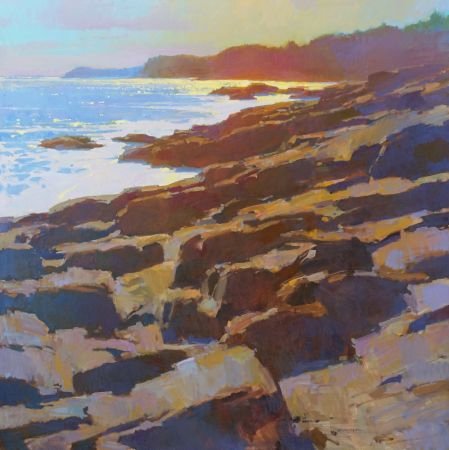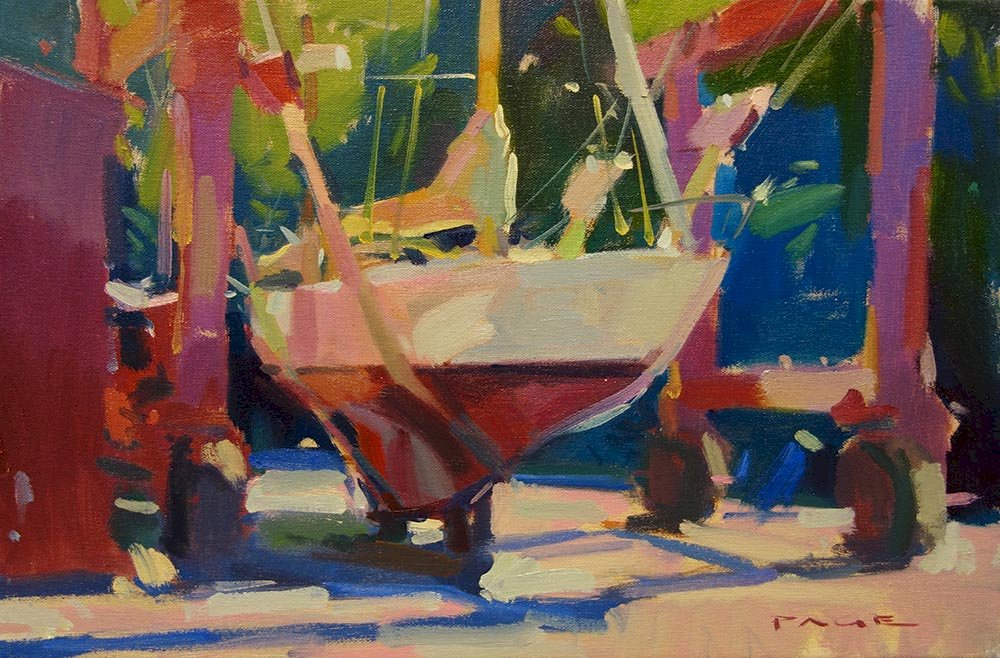Colin Page on Color and Light
March 17, 2020
For me, the initial desire to paint usually comes from a striking color relationship or an interesting sense of light, no matter the subject. My goal is not to copy the scene exactly, but to recreate my sense of visual excitement. This is often done by focusing on color temperature and vibration. When I talk about temperature, warm colors are those that lean more toward oranges, yellows and reds, while cool colors are closer to blue and purple.
Often two colors of opposite temperatures next to each other create a vibration. If you've ever noticed a clashing color interaction that made you want to look away, it was likely a color vibration. It can be unnerving, and hard to look at, but it can also create energy in a flat picture plane. That energy can be a wonderful tool for activating a painting and describing strong light. For example, a bright lemon yellow piece of glare next to ultramarine blue water will jump with electricity, saying much more about the intensity of the sun than just using plain white on a gray-blue. The trick is not just trying to match the color you see, but learning how much you need to exaggerate and push the color's saturation to tell the viewer how the light felt that day.
The power of color vibrations can add interest to every part of a painting, even to the point of making shadows richer and more alive. Many times a warm color will be reflected into a shadow, right next to an area of cool blues. In fact shadows are often the best place to look for mini-vibrations, where warm and cool colors come together in subtle ways. An old white New England house can be a perfect place to look for reflected color. Green grass will bounce into the same shadow that turns pink where it reflects the red truck parked out front. . When I see this kind of color story, I want to put it on canvas to tell everyone how striking it is. To be a painter is to see spots of color that lilt, harmonize, clash, push, and pull. Vibrations, whether strong or subtle, can be used to great effect to create interest and energy in a painting.
Shareable link to this blog entry:
http://www.thepagegallery.com/blog/colin-page-on-color-and-light
.jpg)

